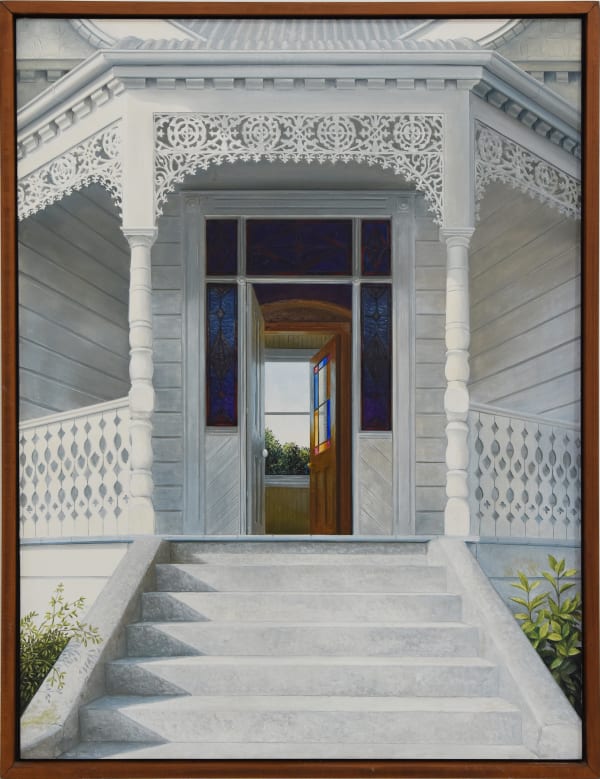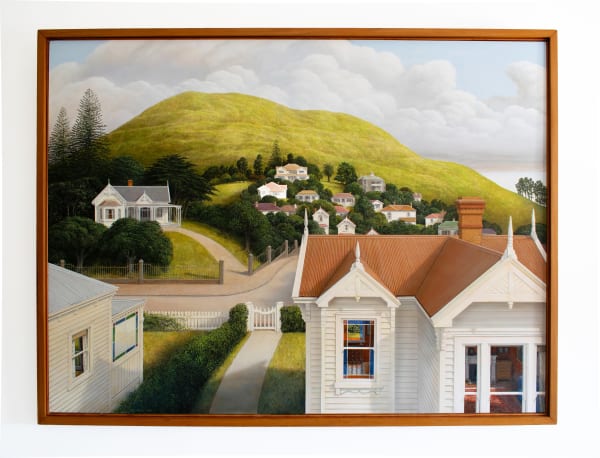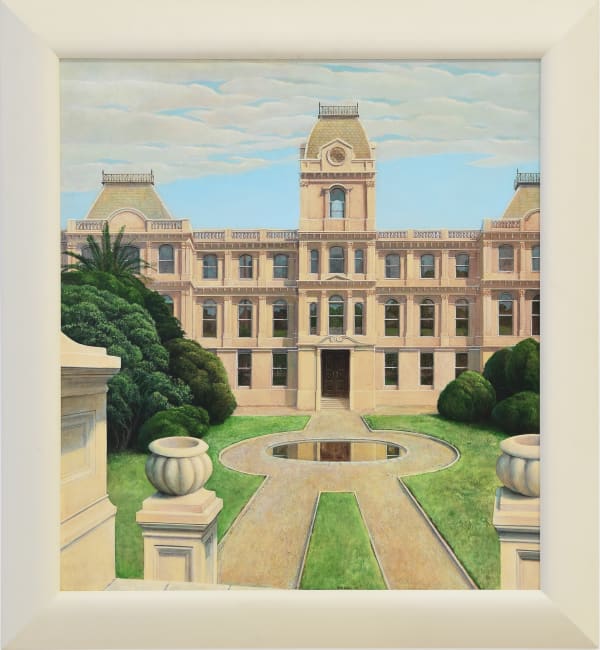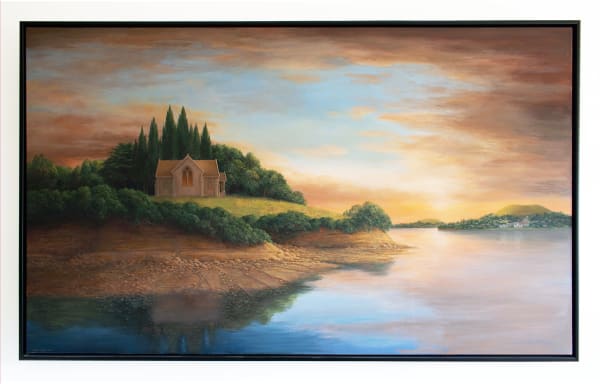Sir Peter Siddell
As one of New Zealand’s most prominent realist painters, Sir Peter Siddell was perhaps best-known for his unpopulated cityscapes which appear familiar, yet are not identifiable. He drew together different elements from a variety of sources to create timeless images of neighbourhoods that look uninhabited despite there being evidence of earlier human presence. These cities are clean, tidy, carless and unpeopled. The houses’ interiors, seen through clean windows, are empty. The presence of people is implied by such devices as a door left open, or a view that is placed immediately in front of the viewer. It is as if all the inhabitants of that city or neighbourhood have fled, leaving their buildings in perfect condition.
While his works appear to be records of actual places, most of Siddell’s paintings have a subjective component. Memory association and invention play roles in those compositions.
In her 1994 essay published in From the Isthmus, Julie Roberts described Siddell’s work as such:
“The predominance of the urban image in his oeuvre sets Siddell apart from many of his contemporaries. The landscape has tended to dominate New Zealand painting and although the unique topography of this country is an essential component of his work, Siddell subordinates the landscape to the city. Or more correctly perhaps, he consistently juxtaposes the city with the land. Nature and human habitation co-exist.’
-
 Sir Peter Siddell82 Clonbern Road, Remuera, 1981Oil on board60.4 x 44 cmSigned & dated 1981
Sir Peter Siddell82 Clonbern Road, Remuera, 1981Oil on board60.4 x 44 cmSigned & dated 1981 -
 Sir Peter SiddellUntitled, 1983Oil on board90 x 120 cmSigned & dated 1983
Sir Peter SiddellUntitled, 1983Oil on board90 x 120 cmSigned & dated 1983 -
 Sir Peter SiddellThe Customhouse, Auckland, 1975Acrylic on board78 x 71 cmSigned & dated 1975
Sir Peter SiddellThe Customhouse, Auckland, 1975Acrylic on board78 x 71 cmSigned & dated 1975 -
 Sir Peter SiddellLooking West, 2009Oil on canvas35.5 x 51 cmSigned & dated 2009
Sir Peter SiddellLooking West, 2009Oil on canvas35.5 x 51 cmSigned & dated 2009 -
 Sir Peter SiddellEvensong 2, 2009Oil on canvas90 x 159 cmSigned & dated 2009
Sir Peter SiddellEvensong 2, 2009Oil on canvas90 x 159 cmSigned & dated 2009







